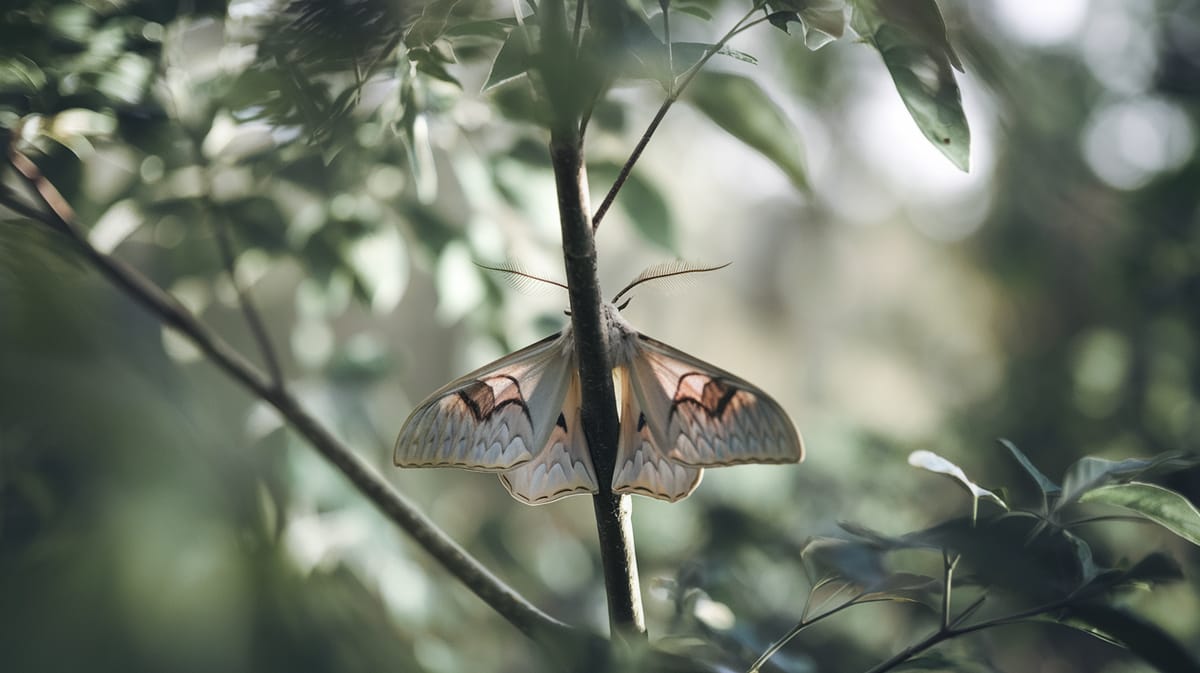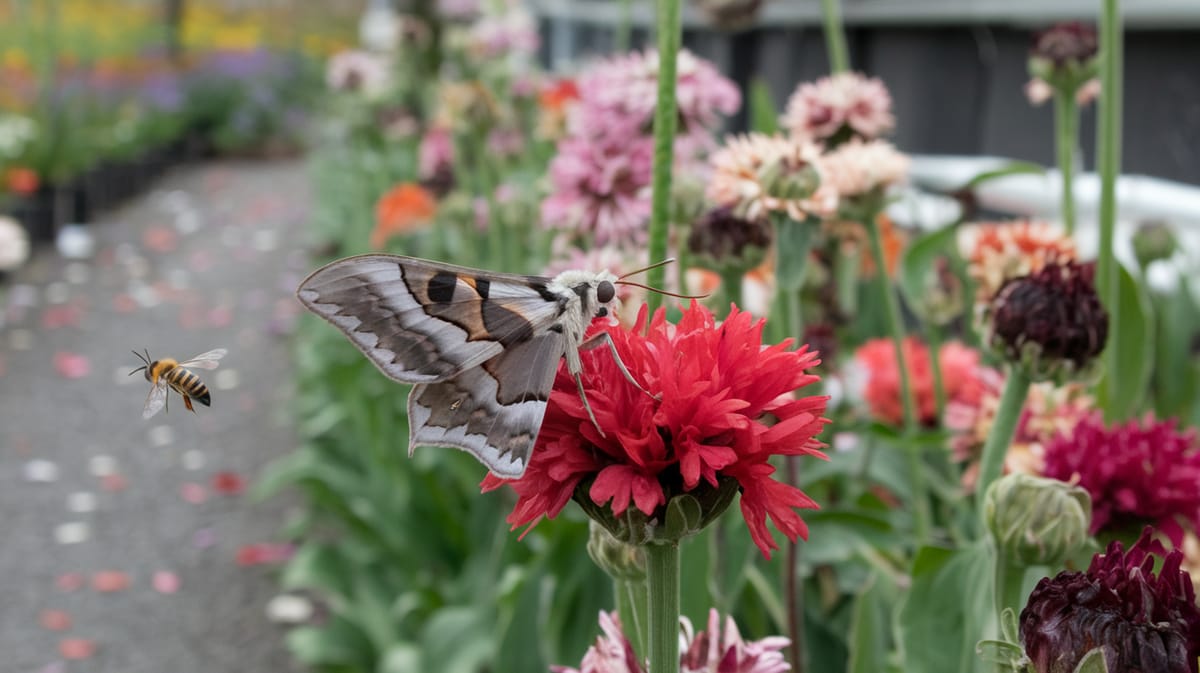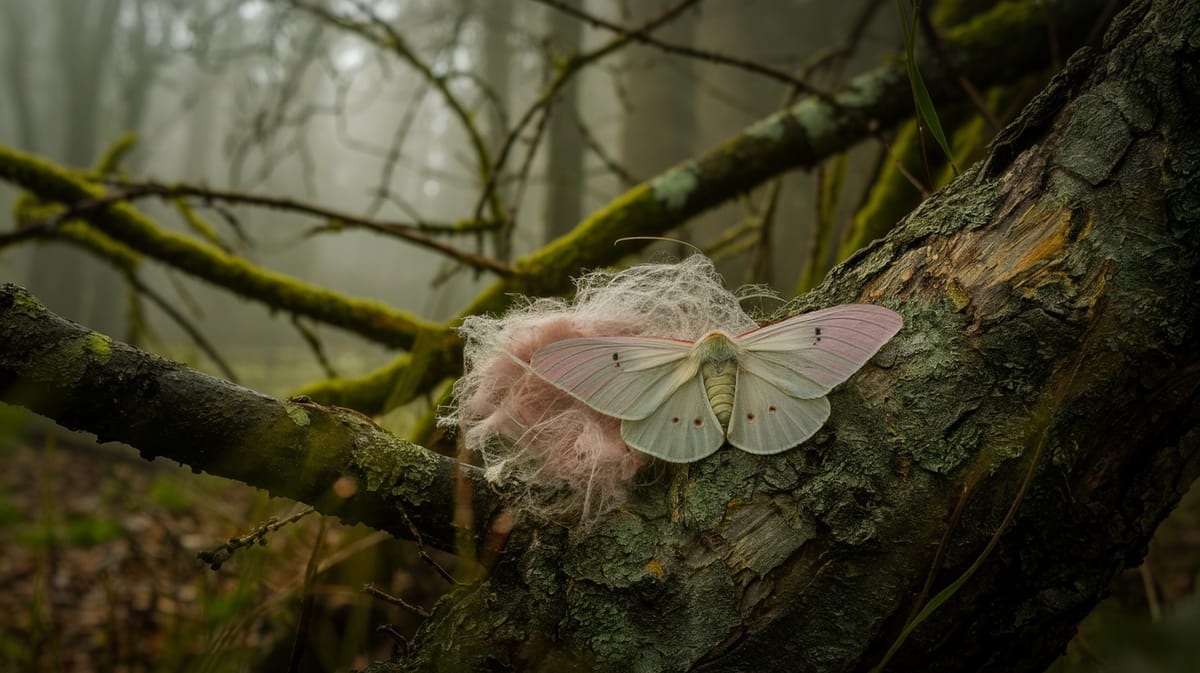Gypsy Moth
Voracious in appetite, the Gypsy Moth defoliates vast forests, impacting ecosystems and biodiversity. Its caterpillar's adaptability makes it a formidable force against various tree species.

Key Insights at a Glance
Did You Know?
Taxonomy & Classification
The gypsy moth, notorious for its voracious appetite, has evolved unique adaptations that allow it to thrive in diverse environments, significantly impacting forest ecosystems. Let's understand the evolutionary journey and classification of these remarkable herbivores.
Global Reach
Originating in Europe and Asia, the gypsy moth now thrives in North America, demonstrating its adaptability through invasive expansion.
Evolutionary Success
Surviving since the Pleistocene, the gypsy moth's adaptability and diverse diet have ensured its persistence through climatic changes and habitat shifts.
Lifecycle and Growth
A remarkable journey of transformation from Egg to Adult.
Egg
Laid in clusters, eggs remain dormant over winter, protected by a hairy covering until hatching in spring.
Larva
Larvae, or caterpillars, feed voraciously on leaves, causing defoliation and undergoing multiple molts for growth.
Pupa
Within a cocoon, the caterpillar transforms into an adult, undergoing significant morphological changes in a protective structure.
Adult
Adult moths focus on reproduction; females lay eggs while males seek mates, neither feed during this stage.
Dietary Habits
A voracious leaf-eater with a broad appetite, this insect primarily targets deciduous trees and shrubs, adapting to diverse foliage environments.
| DIET TYPE | DESCRIPTION |
|---|---|
| Primary Diet | Prefers oak, birch, and aspen leaves, stripping trees bare during larval stages for sustenance. |
| Secondary Diet | Occasionally feeds on conifer needles, especially when primary food sources are scarce or under environmental stress. |
| Occasional | Rarely consumes herbaceous plants and grasses, an adaptation seen in extreme food shortages. |

Behaviour and Adaptations
Discover the fascinating traits that enable the Gypsy Moth to thrive across various environments.
Defoliation Efficiency
Rapidly consumes foliage, impacting forest ecosystems significantly.
Silk Thread Navigation
Uses silk threads to travel between trees, enhancing mobility.
Reproductive Prolificacy
Females lay up to 1,000 eggs, ensuring widespread dispersal.
Ecosystem Impact
Gypsy Moths play a complex role in ecosystems by influencing species interactions and nutrient cycles.
Nutrient Recycling
Fosters decomposition by accelerating leaf litter breakdown, enriching soil nutrients.
Food Source
Serves as prey for birds and small mammals, supporting biodiversity.
Population Control
Helps regulate tree density by defoliating certain tree species.
Conservation Challenges
Understanding and addressing the major threats to Gypsy Moth populations.
Chemical Exposure
Pesticides disrupt gypsy moth development and survival rates.
Habitat Loss
Deforestation reduces available host trees for gypsy moth larvae.
Climate Change
Altered climate patterns affect moth breeding cycles and distribution.
Frequently Asked Questions
How long do Gypsy Moth live?
Gypsy Moths have a lifespan of about a year. Eggs hatch in spring, and caterpillars mature into moths by summer. Adult moths live for a few weeks, long enough to mate and lay eggs for the next generation.
What do Gypsy Moth eat?
Gypsy Moths primarily feed on the leaves of hardwood trees like oak, birch, and aspen. During heavy infestations, they can strip trees bare, impacting forest health and ecosystem balance.
Are Gypsy Moth poisonous?
Gypsy Moths are not poisonous to humans or pets. However, their caterpillars have tiny hairs that can cause skin irritation or allergic reactions in some people. It's best to avoid direct contact with them.
Are Gypsy Moth endangered?
Gypsy Moths are not endangered. In fact, they are considered invasive in many areas where they cause significant ecological and economic damage due to their voracious appetite for tree leaves.
What do Gypsy Moth symbolize?
Gypsy Moths don’t have a widely recognized symbolic meaning. They are often associated with transformation in the lifecycle context but are more notably known for their impact on forests and human activities due to their invasive nature.
Do Gypsy Moth bite?
Gypsy Moths do not bite humans or animals. Their caterpillars feed on tree leaves, and while they can cause skin irritation due to their tiny hairs, they do not have biting mouthparts.
What color are Gypsy Moth?
Adult male Gypsy Moths are brown with dark markings, while females are white with black markings. Female moths are larger and less colorful compared to the males, which are smaller and can fly.
Does a Gypsy Moth have wings?
Yes, adult Gypsy Moths have wings. Males can fly and actively search for females, while females have wings but are flightless. They rely on pheromones to attract males for mating.
What does a Gypsy Moth look like?
Adult Gypsy Moths are medium-sized. Males are brown with feathery antennae, while females are white with black markings and larger. Caterpillars are hairy, with blue and red spots along their back, growing up to 2 inches long.
Is a Gypsy Moth an insect?
Yes, the Gypsy Moth is an insect. It belongs to the order Lepidoptera, which includes butterflies and moths. They undergo complete metamorphosis, transitioning from egg to larva (caterpillar), pupa, and adult moth stages.
Related Insects
Discover insects with similar characteristics to Gypsy Moth - including shared habitats, diets, and taxonomic classifications
Share this profile
Help others discover Gypsy Moth
